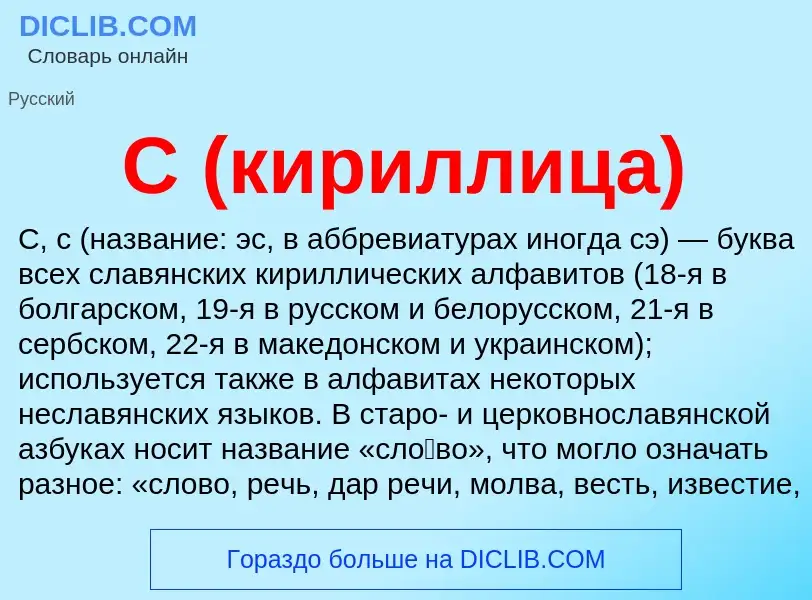Enter a word or phrase in any language 👆
Language:
Translation and analysis of words by ChatGPT artificial intelligence
On this page you can get a detailed analysis of a word or phrase, produced by the best artificial intelligence technology to date:
- how the word is used
- frequency of use
- it is used more often in oral or written speech
- word translation options
- usage examples (several phrases with translation)
- etymology
What (who) is приходится ~ с - definition
Раз на раз не приходится (фильм)
С (кириллица)
БУКВА КИРИЛЛИЦЫ
С (буква); Слово (буква); Буква С; С (former Unicode lowercase); C (кириллица)
С, с (название: эс, в аббревиатурах иногда сэ) — буква всех славянских кириллических алфавитов (18-я в болгарском, 19-я в русском и белорусском, 21-я в сербском, 22-я в македонском и украинском); используется также в алфавитах некоторых неславянских языков. В старо- и церковнославянской азбуках носит название «сло́во», что могло означать разное: «слово, речь, дар речи, молва, весть, известие, проповедь, изречение, Писание, заповедь». В кириллице обычно считается 19-й по порядку и выглядит как ; в глаголице по счёту 20-я, имеет вид . В обеих азбуках числовое значение — 2
С лёгким паром!
СТРАНИЦА ЗНАЧЕНИЙ
С лёгким паром; С легким паром; С легким паром!
С лёгким паром! — традиционное русское приветствие после посещения приветствуемым бани или принятия им тёплой/горячей ванны.
Дворецкий (чин)
Дворецкий (в старину Дворецкой) - придворный чин, возглавлявший Дворецкий приказ (Большой Дворец), в котором дворецкий был главным судьёй. над судьями, которых он назначал.
Wikipedia
Раз на раз не приходится

«Раз на раз не приходится» — комедийный, сатирический художественный фильм режиссёра Араика Габриэляна.
Examples of use of приходится ~ с
1. Сложнее всего приходится с отработкой документации.
2. Приходится с грустью констатировать, что вампиров нет.
3. Вставать приходится с рассветом и работать дотемна.
4. Потом ее приходится с большими потерями исправлять.
5. Естественно, нам теперь приходится с ними сотрудничать.



